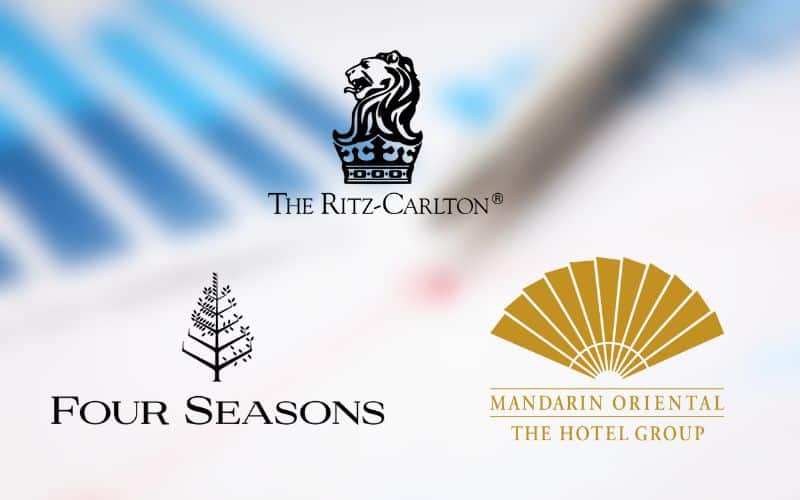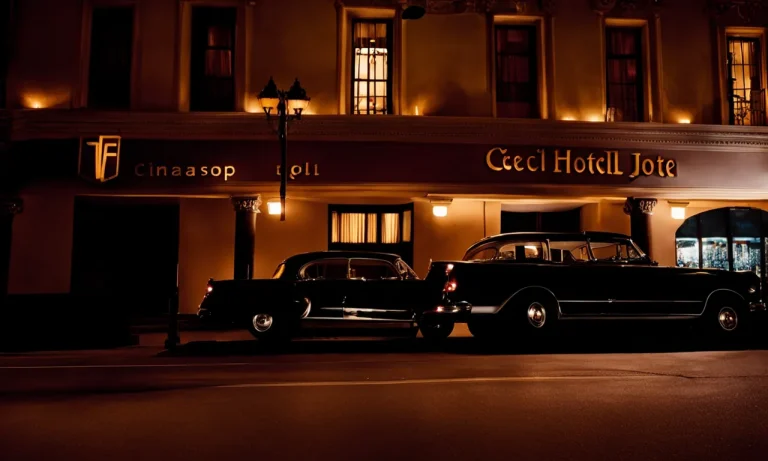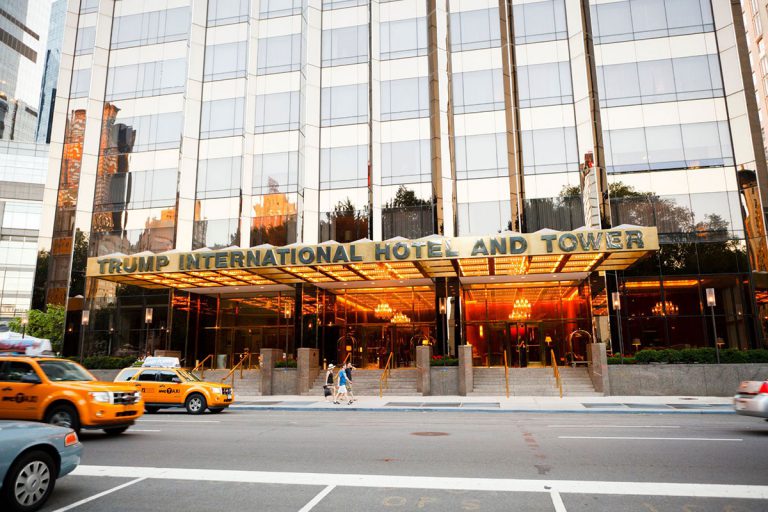As the hospitality industry continues to grow, many people wonder about the profitability of running a 5-star hotel.
If you’re curious about how much money these luxury hotels make yearly, you’ve come to the right place.
In this article, we’ll explore the factors influencing a 5-star hotel’s revenue and estimate how much these hotels make annually.
Factors That Influence a 5-Star Hotel’s Revenue

Location and Demand
The location of a 5-star hotel plays a crucial role in determining its revenue. Hotels in popular tourist destinations or business hubs tend to attract more guests, increasing revenue.
The demand for accommodation in these areas also drives up prices, allowing hotels to charge premium rates. Additionally, proximity to attractions, transportation facilities, and safety can influence a hotel’s revenue.
Room Rates
The room rates set by a 5-star hotel directly impact its revenue. These rates are determined based on various factors, including the hotel’s reputation, amenities, and the level of luxury offered. Hotels with a strong brand presence and excellent customer reviews can command higher rates.
On the other hand, discounts and promotional offers may be used during off-peak seasons to attract more guests and increase revenue.
Food and Beverage Sales
Food and beverage sales are an essential source of revenue for 5-star hotels. The quality of dining options and the reputation of the hotel’s restaurants can attract both guests and non-guests, contributing to increased revenue.
Upscale hotels often offer a variety of dining experiences, including fine dining restaurants, cafes, and bars, to cater to different guest preferences and maximize revenue potential.
Other Services and Amenities
5-star hotels offer a range of services and amenities beyond accommodation and dining. These include spa facilities, fitness centers, conference rooms, and concierge services. The availability and quality of these offerings can significantly impact a hotel’s revenue.
Guests often pay a premium for access to these additional services, enhancing the hotel’s revenue streams.
Marketing and Branding
Effective marketing and branding strategies are crucial for a 5-star hotel to maximize its revenue potential. A strong brand presence and positive reputation can attract more guests and justify higher room rates.
Hotels invest in various marketing channels, including online platforms, social media, and partnerships with travel agencies, to reach a wider audience and promote their unique offerings. Building a loyal customer base through exceptional service and experiences contributes to long-term revenue growth.
Estimating a 5-Star Hotel’s Annual Revenue

Average Room Rate and Occupancy Rate
When estimating the annual revenue of a 5-star hotel, two important factors to consider are the average room rate and the occupancy rate. The average room rate refers to the average price charged per room. This can vary depending on location, amenities, and seasonality.
The occupancy rate, however, represents the percentage of rooms occupied at any given time. A higher occupancy rate indicates a higher room demand and can contribute to higher revenue.
Also Read:
What is a Good Occupancy Rate for a Hotel?
Effective Strategies to Boost Hotel Occupancy Rates
How To Calculate Occupancy Percentage In Hotel: A Comprehensive Guide
Food and Beverage Sales per Room
In addition to room revenue, 5-star hotels often generate a significant portion of their income from food and beverage sales. This includes revenue from on-site restaurants, bars, and room service.
The average food and beverage sales per room can vary depending on the hotel’s dining options, menu offerings, and the preferences of its guests.
Upscale restaurants and specialty bars can contribute to higher sales and revenue.
Other Sources of Revenue
5-star hotels can also generate revenue from various other sources. This may include income from spa services, meeting and event space rentals, parking fees, and partnerships with local businesses for exclusive experiences.
Some hotels may also earn revenue through partnerships with travel agencies or by offering additional services such as airport transfers or tour packages. These additional revenue streams can significantly contribute to a hotel’s annual revenue.
Calculating Total Revenue
To estimate a 5-star hotel’s annual revenue, one can multiply the average room rate by the occupancy rate to determine the room revenue. Then, the food and beverage sales per room can be added to this figure.
Additionally, revenue from other sources, such as spa services, event space rentals, and partnerships, can be included. The hotel’s total annual revenue can be estimated by summing up all these components.
It’s important to note that the revenue of a 5-star hotel can vary significantly depending on factors such as location, market demand, and the hotel’s reputation. Economic conditions and global events can also impact a hotel’s revenue.
Therefore, it’s essential for hoteliers to continuously monitor and adapt their revenue strategies to maximize their earnings.
Examples of 5-Star Hotel Revenue

The Ritz-Carlton
The Ritz-Carlton is known for its luxurious accommodations and impeccable service. With its prime locations in major cities and popular tourist destinations, it’s no surprise that The Ritz-Carlton generates significant revenue year after year.
According to https://www.ritzcarlton.com/, the average revenue for a 5-star Ritz-Carlton hotel is estimated to be around $500 million per year.
The Four Seasons
The Four Seasons is another renowned name in the luxury hotel industry. The Four Seasons attracts discerning travelers worldwide with its elegant decor, top-notch amenities, and personalized service.
According to https://www.fourseasons.com/, the average annual revenue for a 5-star Four Seasons hotel is approximately $400 million. This impressive figure is a testament to the hotel’s ability to deliver exceptional experiences to its guests consistently.
The Mandarin Oriental
The Mandarin Oriental is known for its opulent accommodations, world-class spas, and exceptional dining experiences. This prestigious hotel brand has a strong presence in major cities across the globe.
According to https://www.mandarinoriental.com/, the average revenue for a 5-star Mandarin Oriental hotel is estimated to be around $350 million per year. This revenue reflects the hotel’s commitment to providing unparalleled luxury and service to its guests.
It’s important to note that revenue figures can vary depending on various factors such as location, number of rooms, occupancy rates, and average room rates. These examples serve as a general guideline and should not be considered exact figures for all 5-star hotels.
Nonetheless, they provide insight into the immense revenue potential that top-tier luxury hotels can achieve.
Challenges and Opportunities for 5-Star Hotels
Competition from Other Hotels
One of the biggest challenges that 5-star hotels face is the intense competition from other hotels in the market. With the rise of boutique hotels, Airbnb, and other accommodation options, 5-star hotels must constantly innovate and provide exceptional services to differentiate themselves.
This means investing in state-of-the-art facilities, offering unique amenities, and providing personalized experiences to guests. Hotels must continuously adapt to changing consumer preferences and market trends to stay ahead.
Risks of Over-Expansion
While expansion can bring new growth opportunities, it also comes with risks for 5-star hotels. Over-expansion can lead to a dilution of brand value and a decrease in customer loyalty.
It is important for hotels to carefully analyze market demand and ensure that new properties are strategically located and meet the expectations of their target customers.
Additionally, maintaining consistent service quality across multiple locations can be challenging. Hotels must have robust systems and processes to ensure that each property delivers the same level of excellence.
Opportunities for Growth
Despite the challenges, there are several opportunities for 5-star hotels to grow their revenue.
With the rise of global tourism, there is an increasing demand for luxury accommodations. Hotels can tap into this market by offering unique experiences like spa retreats, gourmet dining, and exclusive access to local attractions.
Additionally, hotels can leverage technology to enhance guest experiences and streamline operations. For example, implementing mobile check-in/out, personalized marketing campaigns, and smart room technology can greatly improve guest satisfaction and drive repeat business.
Also Read:
8 Proven Strategies to Increase Your Hotel Revenue
What is a 5 Star Hotel?
Are Luxury Hotels Profitable?
Conclusion
In conclusion, running a 5-star hotel can be profitable if managed correctly.
Location, room rates, and food and beverage sales contribute to a hotel’s revenue.
While there are challenges and risks associated with the industry, there are also opportunities for growth and expansion.
We hope this article has given you a better understanding of how much a 5-star hotel makes in a year and the factors influencing its revenue.






